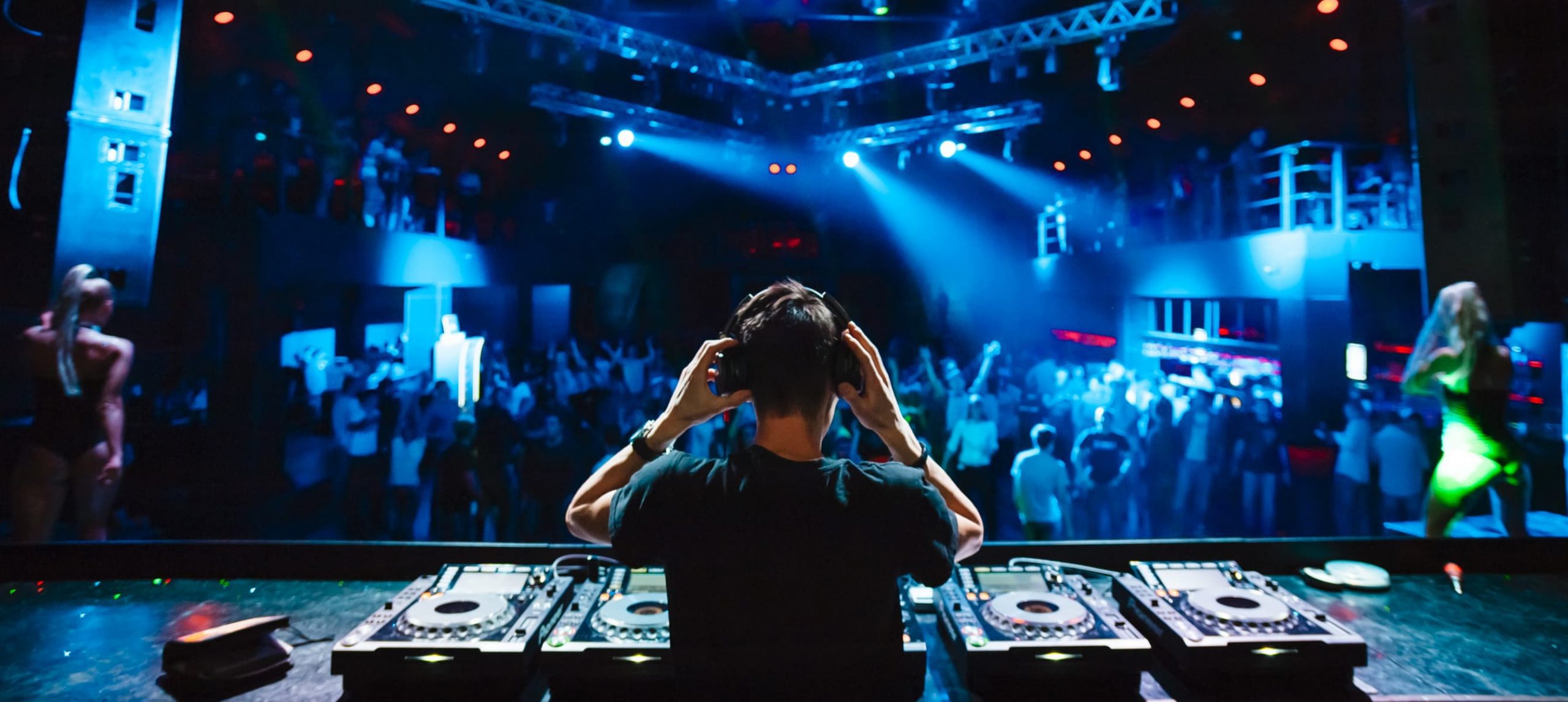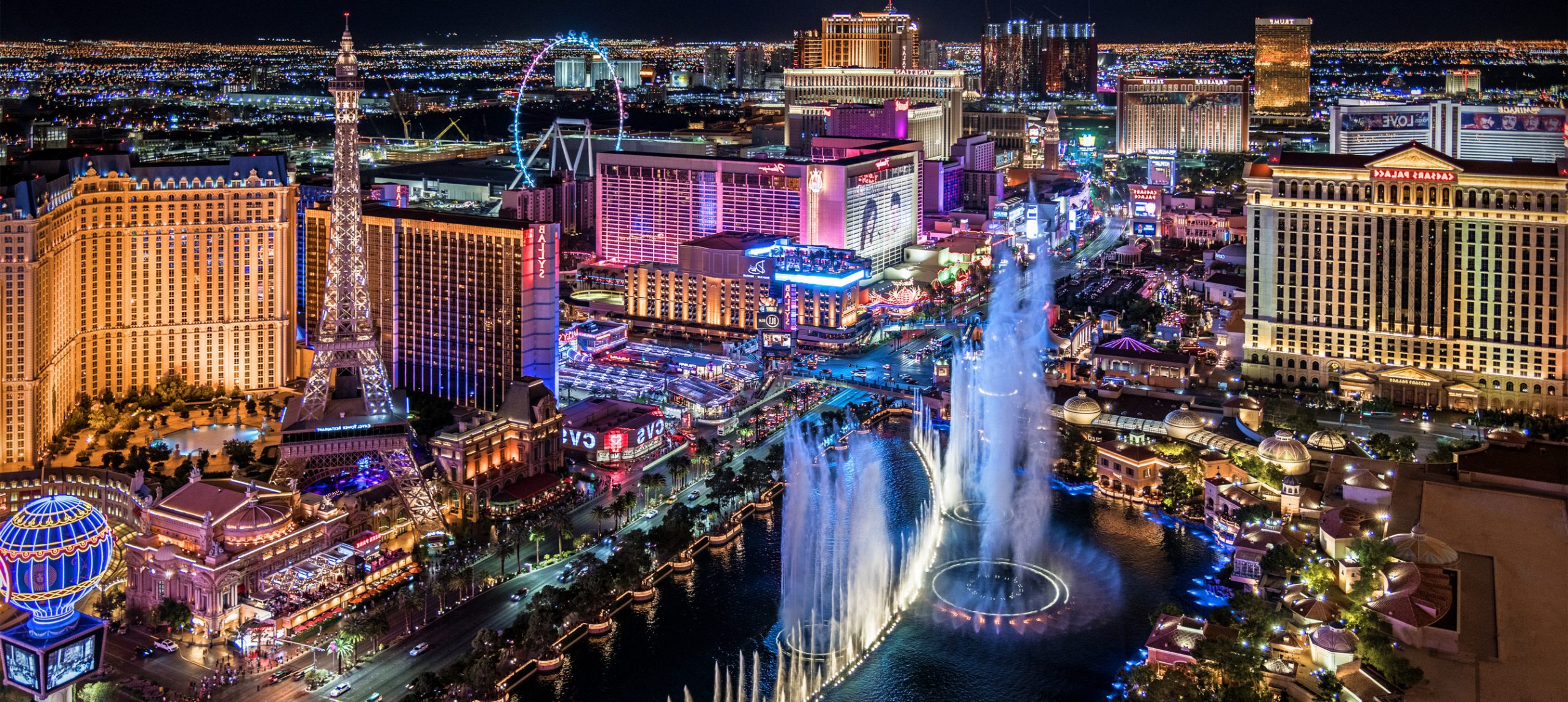A Guide To The Must Visit Opéra Garnier In Paris
The Opéra Garnier, also known as the Palais Garnier, is a jewel in the crown of Parisian architecture and a symbol of the city’s rich cultural heritage. This iconic opera house, designed by the renowned architect Charles Garnier, is...

The Opéra Garnier, also known as the Palais Garnier, is a jewel in the crown of Parisian architecture and a symbol of the city’s rich cultural heritage. This iconic opera house, designed by the renowned architect Charles Garnier, is a must-visit destination for anyone exploring the beauty and history of Paris. Located in the bustling Place de l’Opéra, this grand edifice is not just an opera house but an epitome of opulence and artistic brilliance.
Palais Garnier: In A Nutshell
📍Location: Place de l’Opéra, 75009 Paris, France, Located in the 9th arrondissement of Paris.
🚉 How to Get There:
By Metro: Opéra station (Lines 3, 7, and 8)
By Bus: Numerous bus lines serve the area, including lines 20, 21, 22, 27, 29, 42, 52, 53, 66, 68, 81, and 95
By RER: Auber station (Line A) is nearby
By Car: Public parking is available at Place Vendôme, Place de la Madeleine, and Boulevard Haussmann
📅 Best Time to Visit: Early morning or late afternoon for fewer crowds
🕒 Opening Hours for Visits: Monday to Sunday: 10:00 AM – 5:00 PM (last admission at 4:30 PM)
Closed on January 1st and May 1st
🎟️ Cost of Tickets: Adults: €14, Reduced rate (ages 12-25, over 65, etc.): €10, Children (under 12): Free
Performance Tickets: Prices vary widely based on the performance, seat location, and date; typically range from €10 to over €200

A Glimpse into History of Opéra Garnier
Commissioned by Napoleon III as part of Baron Haussmann’s grand redesign of Paris, the Palais Garnier was completed in 1875. Its construction took over 14 years, partly due to the tumultuous period of the Franco-Prussian War and the fall of the Second Empire. Despite these challenges, Charles Garnier’s vision resulted in an opera house that epitomizes the opulence of the Belle Époque era.
This architectural masterpiece was originally named the Academie Nationale de Musique, reflecting its role as a premier venue for music and dance. Today, it is commonly referred to as the Opéra Garnier, honouring its architect, and remains a vital part of the Opéra National de Paris.
Architectural Marvels
Exterior Grandeur
The exterior of the Palais Garnier is a stunning blend of neo-Baroque elements, characterised by grandiose sculptures, intricate carvings, and a majestic façade. The building’s opulent design is capped by a copper dome and adorned with statues representing music, dance, and Greek mythology, paying homage to the arts.
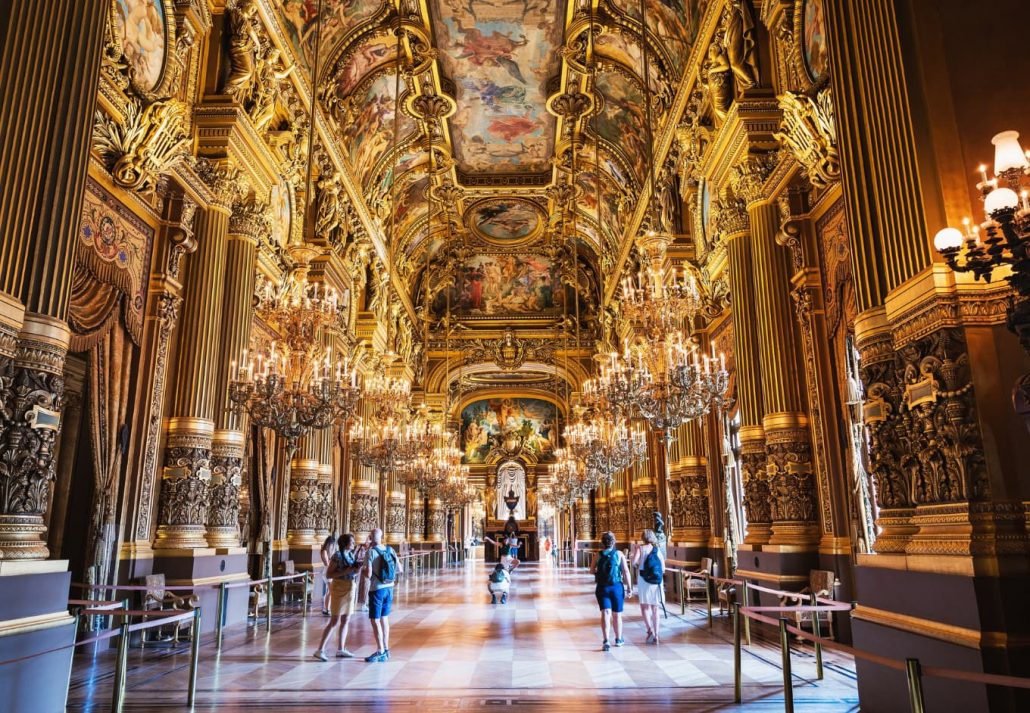
The Grand Staircase
Upon entering the Palais Garnier, visitors are greeted by the magnificent Grand Staircase, or Grand Escalier. This marble staircase, flanked by ornate balustrades and adorned with sculptures, leads to the various levels of the opera house. The grandeur of this space is a prelude to the splendor that awaits inside.
The Grand Foyer and Avant Foyer
The Grand Foyer is a highlight of the Opéra de paris, often compared to the Hall of Mirrors at the Palace of Versailles. This lavish drawing room, with its gilded decorations, frescoes, and chandeliers, serves as a gathering space for opera-goers. The ceiling, painted by Paul Baudry, depicts various scenes from Greek mythology.
Adjacent to the Grand Foyer is the Avant Foyer, another opulent space designed to impress visitors. Its lavish décor and elegant design make it a favorite spot for photos and gatherings.
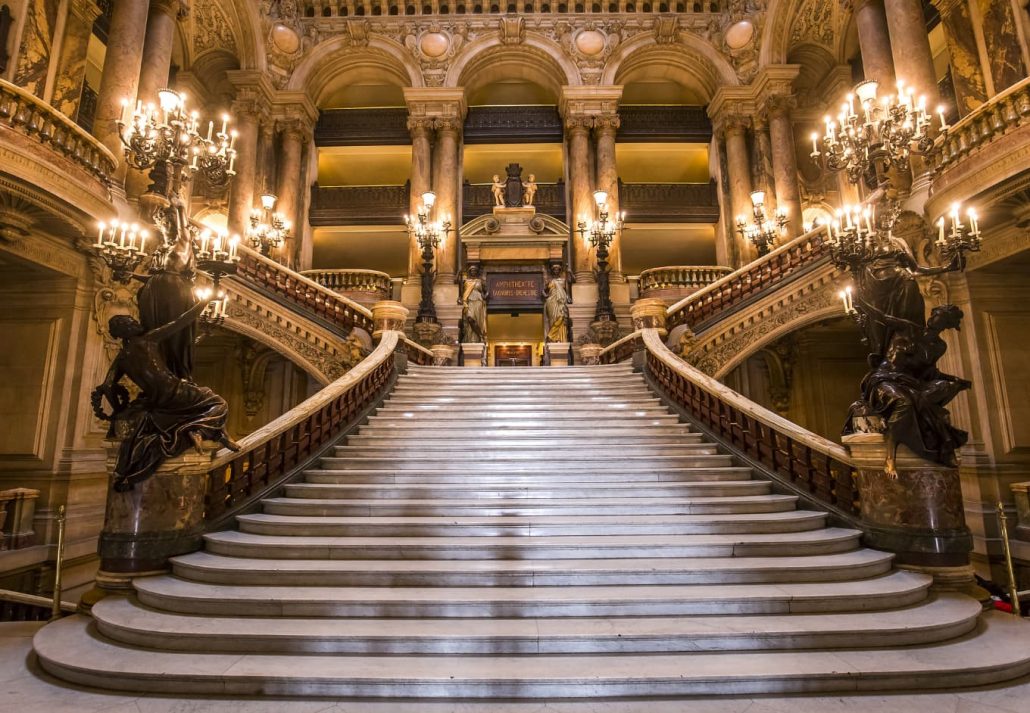
The Auditorium
The heart of the Palais Garnier is its auditorium, designed in the traditional Italian horseshoe shape. This configuration ensures excellent acoustics and visibility from every seat. The ceiling, painted by Marc Chagall in 1964, adds a touch of modern art to the historic setting. The grand chandelier, weighing over six tons, is a centerpiece that illuminates the auditorium in golden light.
The Library Museum
The Opéra Garnier also houses a library museum, the Bibliothèque-Musée de l’Opéra de Paris, which contains a vast collection of books, manuscripts, and artefacts related to the history of the Paris Opéra. It offers a fascinating glimpse into the rich cultural heritage of the institution.
Cultural Significance
The Opéra Garnier has been a stage for some of the world’s great composers, including Mozart, Wagner, and Verdi. It has also been home to legendary ballet company and renowned choreographers like Maurice Béjart, Roland Petit, and Pina Bausch. The opera house continues to host a variety of performances, ranging from classic operas and ballets to contemporary works.
Phantom of the Opera
One of the most enduring legends associated with the Palais Garnier is that of the Phantom of the Opera. Gaston Leroux’s novel, inspired by the opera house, tells the story of a mysterious figure who haunts the building. This tale has been immortalised in numerous adaptations, including Andrew Lloyd Webber’s famous musical.
Stay Options Near Opéra Garnier
For those visiting the Palais Garnier, there are numerous accommodation options that cater to various tastes and budgets, making it easy to find the perfect place to stay. Luxury seekers will appreciate the opulence of the Ritz Paris, known for its grandeur and impeccable service, or the Hotel Scribe, which offers a blend of historic charm and modern amenities. Mid-range options include the Hotel Saint-Petersbourg, which combines comfort with a central location, and the Ibis Paris Opéra, providing affordable rates without compromising on convenience.
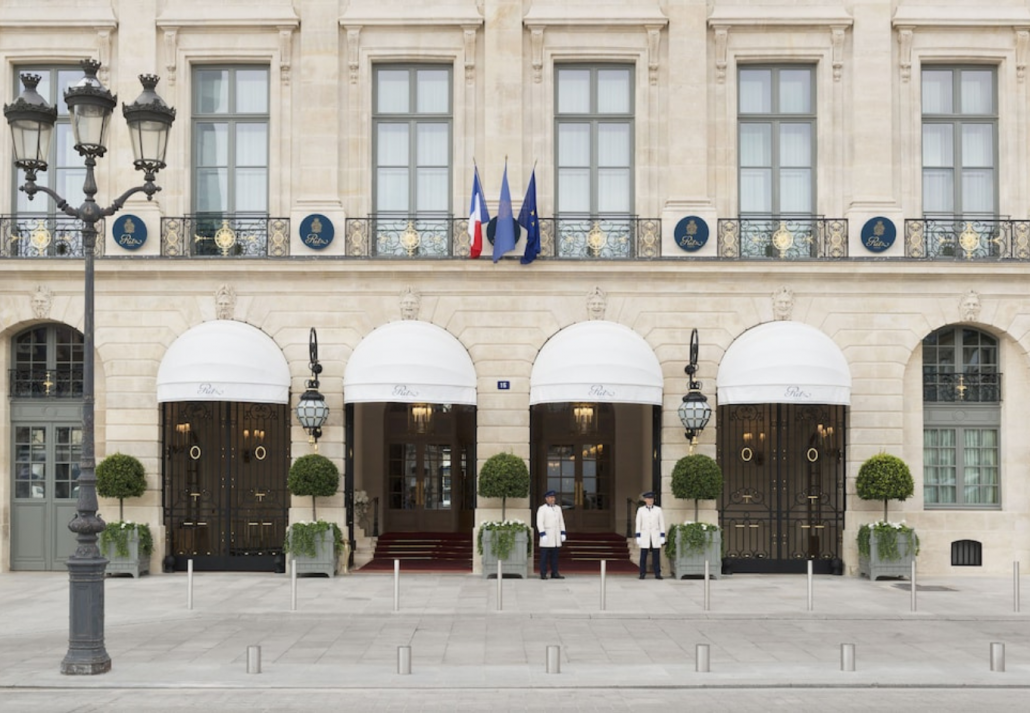 Ritz Paris
Ritz ParisFor a unique experience, consider the Maison Athénée, a boutique hotel with elegant decor inspired by Parisian theatres. These hotels not only offer proximity to the Opéra Garnier but also provide easy access to other attractions like the Musée d’Orsay and the bustling Place de l’Opéra.
FAQs
What is the best way to purchase performance tickets for the Opéra Garnier?
You can purchase performance tickets online through the official Opéra National de Paris website or at the box office located at the opera house. It’s recommended to book in advance, especially for popular performances.
Are there guided tours available in languages other than French and English?
Yes, guided tours are available in multiple languages, including Spanish, Italian, German, and French Sign Language.
Is the Opéra Garnier suitable for children and families?
Absolutely! The Opéra Garnier offers family-friendly tours and events that cater to children. The stunning architecture and engaging stories make it an exciting experience for visitors of all ages.
Are there any dining options within the Opéra Garnier?
Yes, the Paris Opera houses the restaurant L’Opéra Restaurant, which offers a range of dining options from casual snacks to gourmet meals. It’s a great place to enjoy a meal before or after a performance.

 Konoly
Konoly 







